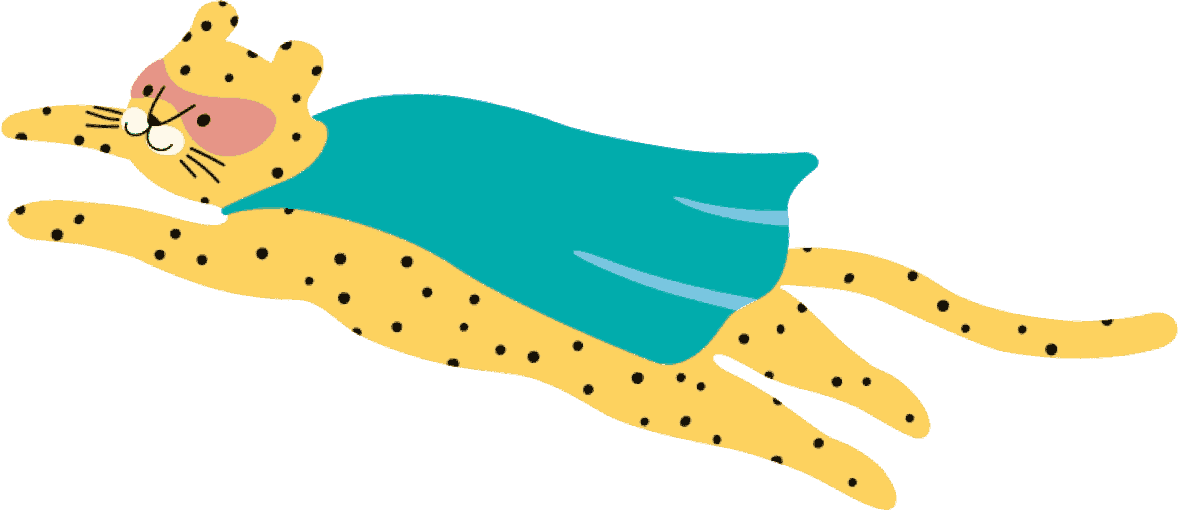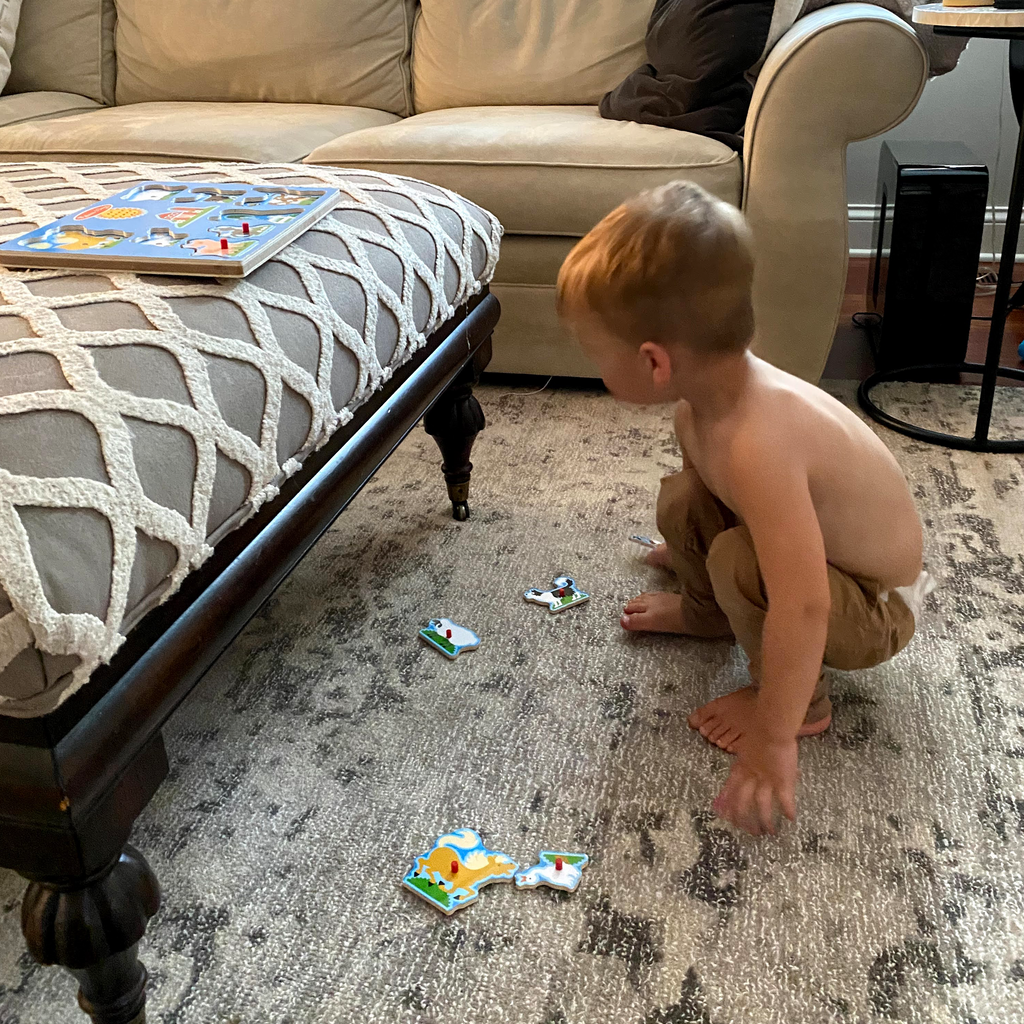Materials:
- A puzzle that your little one loves (otherwise, they won't be incentivized or curious!)
- A flat surface above the floor (table, chair, stool, couch, etc)
Instructions:
- Set the puzzle on the surface. In order for this activity to be interesting to your little one, they should love (or at least like) this puzzle and be excited or curious to piece it together. If not, it would be best to have them practice ahead of time so they know what to do with each puzzle piece.
- Remove all the pieces and put them on the floor, facing up.
- Place the frame of the puzzle on your elevated flat surface. If this is a single jigsaw puzzle, place a portion of the already-done puzzle on this surface. It should be easily accessed when your child is standing.
- Encourage your infant to squat to retrieve one puzzle piece at a time and place it in the puzzle. Each time they squat they are stretching muscles in their ankles, hips, and trunk, helping to increase range of motion needed for activities like running and climbing. They are also building balance skills, by moving their center of mass through space. Finally, they are building tons of strength! Squats are such a great way to engage glute and abdominal muscles, important for all movement. They are also building fine motor skills when placing each piece in the puzzle.
- Each time you put a piece in the puzzle, describe the puzzle piece, or if the baby is talking, encourage them to tell you about it. “The cow says MOO!" “Can you find the pink pig?” “Do you see a BIG horse and a little cat?” This helps to build the baby's language skills!
- Repeat until all the pieces are in the puzzle and do it again and again.
- If your little one needs to step away or gets distracted, keep the puzzle in the same spot and encourage them to return to it to finish!
Skill areas addressed:
- Gross motor skills
- Coordination
- Motor control
- Balance
- Fine motor skills
- Core and leg strength
- Language skills
- Mobility
Extensions & Adjustments:
- For younger babies (9-12 months), knob puzzles are a great place to start, and they likely will need some assistance to successfully place the pieces in, which is fine!
- Also for younger babies (9-11 months), if squatting all the way to the floor is too hard, use two surfaces like a coffee table and a stool to shorten the distance between the pieces and the puzzle frame and therefore make the squat easier.
- For older babies (15-18 months), try more of a challenge. Spread the puzzles pieces out instead of having them right on the floor.
Author: Brittany Gardner

